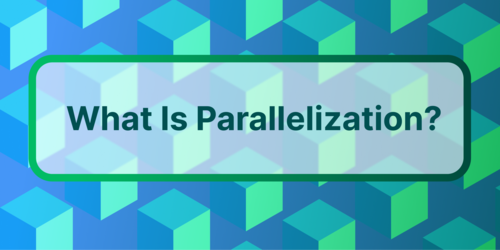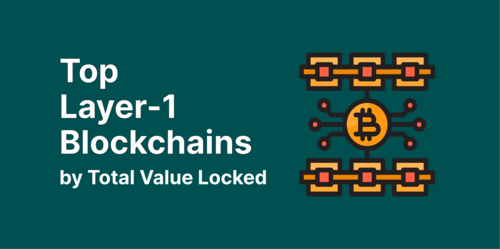Introduction to Polygon (MATIC)
Polygon network’s principal aim is to scale the Ethereum blockchain. Due to an overwhelming rate of adoption and an insufficient infrastructure to sustain this influx and high frequency of use, the Ethereum blockchain can become ‘unusable’. It means that during times with high traffic, users will have to endure high transaction fees, slow transaction execution speed, a high rate of transaction failure, and other unpleasant experiences.
Polygon network consists of a collection of Layer-2 scaling solutions for Ethereum blockchain and an efficient cross-chain that presents an improved experience to users. It also plays a role in simplifying the building process of Ethereum blockchain applications.
Watch this video guide on Polygon network:
Polygon network’s solutions comprise high throughput infrastructures that maintain decentralization and preserve security, with the hope of facilitating the adoption of Ethereum blockchain technology.
Polygon network consists of several Ethereum scaling solutions and blockchain development facilities, including;
Polygon SDK
Polygon SDK (Software Development Kit) Polygon SDK makes it possible for developers building on Polygon to use already designed protocols. This makes their development process easier and faster and makes their applications conform to the principles of Polygon network. Developers on Polygon can easily install and use synchronization protocols, consensus algorithms, and other modules from the Polygon SDK. Polygon SDK supports and simplifies the development of independent and secure networks compatible with the Ethereum Virtual Machine (EVM).
Independent (Standalone) networks are built separately from the Ethereum mainnet, manage their own security, and can adopt separate consensus algorithms like Proof of Stake. Standalone networks are relatively less secure but more flexible. The level of decentralization depends on their ability to build a sufficient pool of validators or miners. Polygon SDK’s initial releases mainly supported the development of networks like these. Recent releases are building a support system for Secure networks.
Secure networks depend on Ethereum mainnet for transaction validation, and execution. They utilize Ethereum’s pool of miners to make their network more secure while offering improved scalability and efficiency.
Secure networks are also known as Layer-2 solutions. Layer-2 solutions are a collection of infrastructures designed to take the bulk of transactions or operations on the Ethereum blockchain away from the mainnet. Moving away from the mainnet and utilizing scalability infrastructures gives projects built on layer-2 certain clear-cut advantages, compared to projects built on Ethereum mainnet.
Layer-2 solutions play the ‘exit game’ ingeniously and perfect the shift from Ethereum’s congested layer-1 while ensuring that they retain the level of security and decentralization offered by the mainnet. Privacy and security-oriented projects prefer secure networks to standalone networks.
Polygon PoS Chain

Unarguably the most popular product of the Polygon network, Polygon’s PoS chain is a sidechain that runs parallel to the Ethereum blockchain. Polygon PoS chain can process about 7,000 transactions per second. Transactions cost as low as one cent. It supports the development of decentralized applications (DeFi and other Utilities), minting NFTs, and every other activity that can be performed on the Ethereum blockchain.
The PoS chain is EVM compatible; decentralized applications initially built for Ethereum blockchain can be easily deployed on the PoS chain without a change in the original code. Polygon’s PoS chain is designed to inter-operate with Ethereum blockchain, other standalone chains, and Layer-2 networks. Assets can be bridged from the PoS chain to any of these networks.
With the reduced security, projects building on the PoS chain will be willing to accept a less secured facility in exchange for enhanced speed, efficiency, and (very much) cheaper transactions.
According to verified data, Polygon’s PoS about 130 million unique wallets have been created on the PoS chain and over 1.3 billion transactions to date. Due to a faster transaction speed and cheaper transaction costs, it has seen an impressive rate of adoption.
Over 150 DeFi projects currently run on the PoS chain; a good fraction of this figure operates on other blockchains as well. Uniswap, first built on Ethereum blockchain also operates on the Polygon network. Other notable migrations include 1inch Network and SushiSwap. It is the fourth largest blockchain in terms of Total Value Locked (TVL) on DeFi platforms.
Polygon Plasma Chain
The Plasma chain is frequently mentioned alongside the PoS chain. But while they share a number of similarities, there are tangible differences. Compared to the PoS chain, Polygon’s Plasma chain shares its root with the Ethereum blockchain and is notably more secure. The Plasma chain differs from Secure networks. It has its own consensus mechanism but relies on the Ethereum blockchain for block validation.
Polygon zkEVM (HERMEZ)
Polygon’s Zero-knowledge Ethereum virtual machine (zkEVM) utilizes layer-2 technology to develop an efficient scaling solution for Ethereum that maintains Ethereum blockchain-level security. At the core of its performance is the Zero-Knowledge Rollup protocol (ZK-Rollup). ZK-Rollup speeds up smart-contract transactions and offers a cheaper transaction cost by mass validating transactions. Instead of executing transactions one after the other, ZK-Rollup packages a set of transactions, validates and executes them at once. Transaction validation is hence simplified, facilitated, and cheaper as a huge number of transactions are validated at once.
Polygon’s zkEVM is EVM-compatible; developers on Ethereum can easily migrate, bridge their projects or build new applications on Polygon’s zkEVM without necessarily making changes to their codes or having to learn a new coding language. Polygon’s zkEVM is currently in development and will go live, after completion of the public testing exercise.
Polygon Network’s Architecture
With these facilities optimized for use on the Polygon network, developers are handed an array of options and the freedom to choose a scaling solution that works best for their project. These solutions are developed to work in synergy and can be interchanged easily.
Polygon network architecture guides the operation procedure of polygon-based applications and blockchains.

Polygon’s architecture consists of two optional and two compulsory layers. Standalone and secured networks built on the Polygon network are mandated to use the two compulsory layers.
The two compulsory layers are:
The Polygon Networks Layer
The polygon networks layer is the support layer for Polygon-based applications and blockchains. It is a collection of independent blockchain networks. It supports the productions of transaction blocks, sorting of transactions, and the consensus algorithm of the application or blockchain.
The Execution Layer
The execution layer is responsible for validating and executing transactions initiated on Polygon blockchain and other blockchains built on Polygon. Your transactions on Polygon are finanlized by this layer.
The optional layers are mainly used by Secure networks which depend on Ethereum blockchain for improved security and finalization of transactions. They include:
Ethereum Layer
Blockchains and applications on Polygon network can use Ethereum blockchain’s base layer to validate and finalize transactions, create checkpoints, resolve disputes, and exchange data between Ethereum and Polygon blockchain. Simply put, this layer connects the Polygon network with Ethereum blockchain and is used by Polygon-based applications like secure networks that rely on Ethereum blockchain to validate their transactions
Security Layer
Polygon’s security layer works according to the ‘Validator-as-a-service’ model. Blockchains and applications built on Polygon using the security layer can utilize the security facility on Ethereum blockchain. Using the security layer, polygon-based applications contract miners on the Ethereum blockchain as their validators in return for a pre-determined reward.
Who Created Polygon Blockchain?
Polygon was founded by a team of four – Sandeep Nailwal, Jainti Kanani, Mihailo Bjeli, and Anurag Arjun. Under its former name – Matic network, the first Matic test network was launched in October 2017 to assess the functionality of the plasma chain. Polygon founders envisioned the plasma chain as a competent scaling solution for Ethereum blockchain. Interest in Polygon (then Matic) network grew as Ethereum blockchain’s scalability issues became more obvious.
In an IEO (Initial Exchange Offering) conducted on Binance launchpad in April 2019, Polygon team raised $5.6 million by selling about 1.9 billion Matic tokens to continue developing their Ethereum scaling solution. Matic network mainnet was launched in the second quarter of 2020.
Rebranding from Matic
Despite already making huge progress as Matic network, Polygon adopted its current name in February 2021. The change of name was part of a general rebrand which includes an expansion of the project’s services. As Matic network, the project was only concerned with developing Plasma chains (explained in previous sections). Expanding the project, the development team delved into building more scalability solutions for Ethereum blockchain, including the very popular PoS chain. According to the team, ‘Polygon’ better reflects a collection of several pieces that makes up a uniform network.
What is MATIC Token?
Sequel to the rebranding, MATIC token has retained its ticker (MATIC). MATIC token is the traditional token of the Polygon network. Initially created to tokenize fundraisers for the Matic Network, MATIC token has gained even more utility as the polygon network evolves. Polygon’s PoS chain uses MATIC token as its native token. Transaction fees on the PoS chain are paid in MATIC tokens. Validators on the PoS are also expected to lock MATIC tokens to power their nodes, they are rewarded in MATIC tokens as well. Stakers on Polygon network are also rewarded with MATIC tokens.

A total of 10 billion MATIC tokens were created; about 19% of the supply was distributed to IEO participants, rest of the supply is distributed as staking rewards to validators and also released in a token supply schedule that spans to December 2022.
Check out MATIC's tokenomics, including the details of token allocation and supply schedule on CoinGecko.
Where to buy MATIC Token?
MATIC token is listed on most centralized exchanges. Here’s the list of exchanges you can buy MATIC. You can also purchase the token on the DEXes on Polygon’s PoS chain.
Conclusion
From a Plasma chain project; Polygon has evolved into a system of solutions. Efficient solutions.
Polygon’s scaling solutions promise huge improvements to Ethereum’s technology. The PoS chain is a healthy environment for new projects or ones already operating on other blockchains that wish to build on a more efficient platform and embrace more cost-effective alternatives. With many solutions still in production and the existing ones in continuous optimization, Polygon is placing itself at the forefront of Ethereum and blockchain adoption.
Learn how to add Polygon network to MetaMask wallet.

Joel is deeply interested in the technologies behind cryptocurrencies and blockchain networks. In his over 7 years of involvement in the space, he helps startups build a stronger internet presence through written content. He is the founder of CryptocurrencyScripts. Follow the author on Twitter @agboifesinachi









 Or check it out in the app stores
Or check it out in the app stores